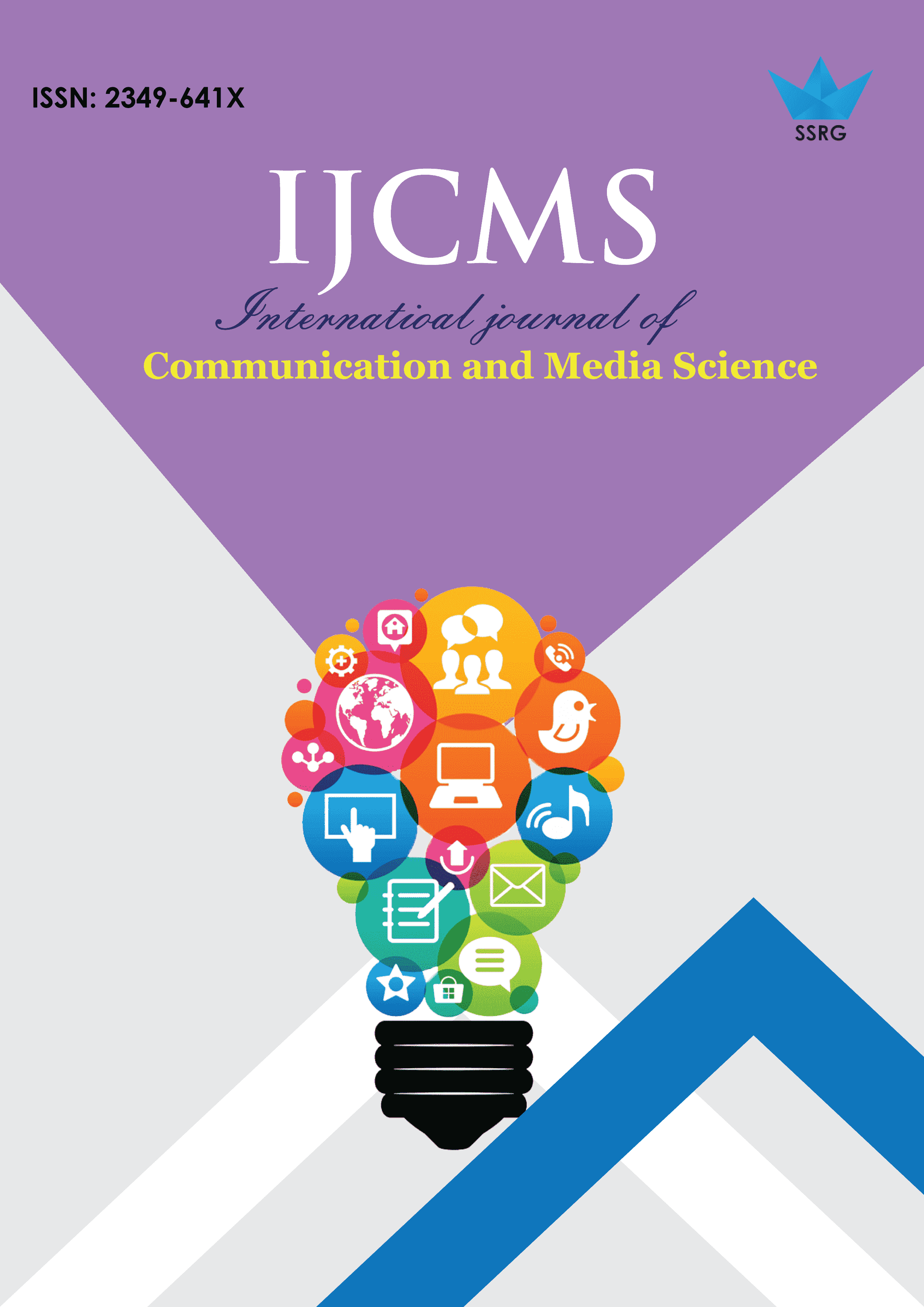Women and Science Communication for Sustainable Development through Mass Media of N-E India in the Last Decade: An Epistemological Case Study

| International Journal of Communication and Media Science |
| © 2017 by SSRG - IJCMS Journal |
| Volume 4 Issue 1 |
| Year of Publication : 2017 |
| Authors : Ratul Datta and Prof. (Dr.) Tapati Basu |
How to Cite?
Ratul Datta and Prof. (Dr.) Tapati Basu, "Women and Science Communication for Sustainable Development through Mass Media of N-E India in the Last Decade: An Epistemological Case Study," SSRG International Journal of Communication and Media Science, vol. 4, no. 1, pp. 1-9, 2017. Crossref, https://doi.org/10.14445/2349641X/IJCMS-V4I1P101
Abstract:
In this research, the main objective is to explore the need of the pedagogic study of growing interest in science communication as an area of specialization in India and role of media for sustainable development. Compared to the Indian scenario it is found that, world has already experiencing a widespread diffusion of such activities for sustainable development. In this research, we have given special emphasis given on North-East Indian states viz. Nagaland, Meghalaya, Mizoram, Arunachal Pradesh, Manipur, Assam, Tripura and Sikkim. Here, obviously comes the role of mass media. 8 largest circulated daily newspapers of 8 NER states viz. Arunachal Times from Arunachal Pradesh, Assam Tribune from Assam, Sangai Express from Manipur, Shillong Times from Meghalaya, Nagaland Post from Nagaland, Sikkim Express from Sikkim, Dainik Sambad from Tripura and The Mizoram Post from Mizoram were taken as sample space from 2001 to 2010. It is found that, overall share of science news on sustainable development in all India level is 3.5 percent whereas, in NER states’ media, space share for science news for the upliftment and development of women is too low, less than 1 percent. Local scientific issues in very regional languages are too low in NER states. There should be more local language daily newspapers for science based news and more initiatives to achieve sustainable development.
Keywords:
Pedagogic, Science communication, Media, Sustainable development, Trafficking, Female work participation rate, Infant Mortality Rate among Female.
References:
[1] Menon-Sen, Kalyani and Shiva Kumar, A.K, 2001, Women in India How Free? How Equal? Report commissioned by the Office of the United Nations Resident Coordinator in India.
[2] Socio-Economic Impact of HIV/AIDS on People Living with HIV/AIDS and Their Families., Published by the Delhi Network of Positive People, Manipur Network of People Living with HIV/AIDS, Network of Maharashtra by People Living with HIV/AIDS, PWN+. Supported by: International Labour Office, New Delhi; 2003
[3] Baruah, Sanjib. (2002). Gulliver's Troubles: State and Militants in North-East India, Economic and Political Weekly, Vol. 37, No. 41 (Oct. 12-18, 2002), pp. 4178-4182.
[4] Baruah, Sanjib (1999). India against itself: Assam and the Politics of Nationality, University of Pennsylvania Press, Pennsylvania.
[5] Dutta, Nandana. (2012). Questions of Identity in Assam: Location, Migration, Hybridity, Sage Publications, Delhi.
[6] O’Sullivan, Chris (2011).The News Media and the Resolution of Ethnic Conflict: Ready for the Next Steps? The Global Review of Ethno politics, Vol. 1, no. 2, p. 54-56.
[7] Hussain, Monirul. (2008). Interrogating Development: State, Displacement and Popular Resistance in North-East India, Sage Publications.
[8] Misra, Udayan. (1999). Immigration and Identity Transformation in Assam, Economic and Political Weekly, Vol. 34, No. 21.
[9] Richardson, J.D. (2005).Framing social identities: The influence of editorial framing on reader attitudes toward affirmative action and African Americans.Communication research. 32(4): 503-528. Sage Publications.
[10] Otojit Kshetrimayum, .Rethinking Women.s Power in Manipur. Unpublished Article
[11] National Family Health Survey-II, 1998-99, Preliminary Report TNS Mode Private Limited, New Delhi and International Institute For Population Sciences, Mumbai, June 2000

 10.14445/2349641X/IJCMS-V4I1P101
10.14445/2349641X/IJCMS-V4I1P101